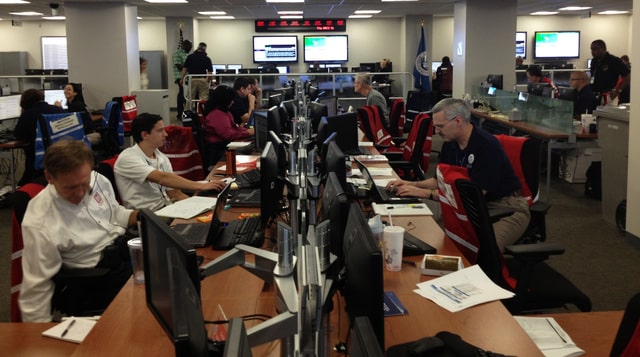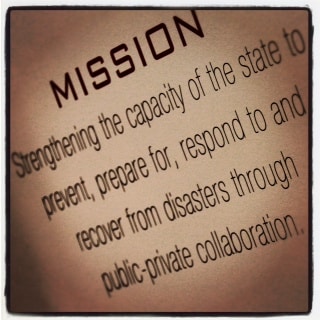On October 29, 2012, Hurricane Sandy came ashore in New Jersey (USA) as a strong, slow moving Category I hurricane. At the time, the author was the Head of Global Crisis Management & Business Continuity for one of the world’s largest retailers. In Sandy’s path that day lay more than 200 of our stores, multiple distribution centers, and the two datacenters powering our e-commerce website. Most importantly, tens of thousands of our employees were in harm’s way as the storm rushed ashore.
We knew, however, that we were not in this fight alone.
Over the past decade, we’ve come to realize that for a community to truly be resilient against a natural disaster, public and private sector entities must work together and share information in a collaborative and transparent manner.
For the three years leading up to Hurricane Sandy, local, state, and federal emergency management agencies had embraced outreach and joint planning with the private sector. The private sector, particularly the retail and utility sectors, had embraced this new approach with open arms. The result has been a strong set of partnerships between the public and private sectors that was apparent throughout the preparation, response, and recovery for Hurricane Sandy.
For example, for several days prior to landfall, public and private sector entities were exchanging information through pre-defined channels. Emergency management agencies were sharing situational updates, storm path updates, and plans for road closures and evacuation areas long before landfall. Private sector companies were sharing their plans for facility closure, employee evacuations, positioning of recovery supplies, and post-landfall response plans. This collaborative and transparent approach provided broader situational clarity for both the public and private sectors and helped avoid confusion later during the more chaotic response phase of the situation.
As the storm began to dissipate and its impact in New Jersey, New York, and other states became clearer, public and private sector entities remained in close contact. The Federal Emergency Management Agency (FEMA) had activated their new National Business Emergency Operations Center (NBEOC) as a component within FEMA’s National Response & Coordination Center (NRCC). The NRCC consolidated a number of federal and state agency reports into one, easy-to-read report for the private sector to digest. At the same time, private sector entities were sending information to the NBEOC that were consolidated and shared at the highest levels of state and federal government. This information helped provide an understanding of the storm’s impact on the private sector.
More importantly, this information helped FEMA and other public sector emergency management agencies make decisions for the distribution of supplies and other resources.
For example, as a major retailer, my employer at the time was able to quickly bring in significant amounts of ice, water, and recovery supplies for both donation and sale at nearly two hundred locations within 24-48 hours after landfall. Emergency management agencies could distribute supplies elsewhere strategically with this information in hand, knowing that needed supplies were available at several locations already. This made for more efficient decision-making and a more coordinated response process.
This close coordination between the public and private sector throughout all phases of business continuity and emergency management was shown to be effective during Hurricane Sandy in the United States. This approach allowed for a significantly faster and more efficient response and recovery of private sector capabilities, helping to ease the burden on emergency management agencies in the public sector – leading to faster economic recovery for the impacted areas.
While opportunities exist to continue to mature the interaction between public and private sector entities, this close coordination and transparent communication will be a requirement to build resilient communities, companies, and nations.
Originally published in the Asian Disaster Preparedness News – June 23rd, 2014.


